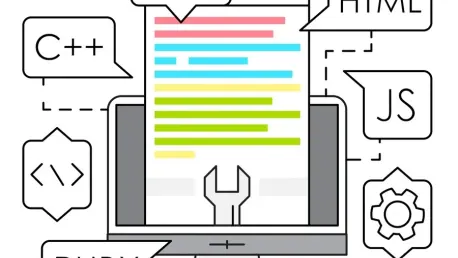In a surprising twist in the realm of programming languages, older “dinosaur” languages such as Fortran and Delphi have staged a significant comeback, as reflected in the Tiobe index of language popularity for March 2025. Delphi, also known as Object Pascal, impressively secured the 10th position, while Fortran landed just shy of the top 10 in 11th place. This resurgence has left many in the tech industry scratching their heads, particularly given the long-standing perception that these languages were all but extinct. However, the compelling reasons behind this revival are rooted in the need to maintain and expand critical legacy systems that many organizations still depend on.
Tiobe CEO Paul Jansen offered insights into this trend, noting that as core developers who built these systems near retirement, companies are opting to keep and even expand their legacy systems with these older languages. The risks associated with migrating to newer, less-proven platforms are often too high a gamble for these enterprises to take. As a result, the familiarity and stability offered by Fortran and Delphi have become invaluable assets. Tiobe’s ranking system, which factors in the number of skilled engineers, availability of courses, and third-party vendors, leverages data from multiple sources, including Google, Bing, Amazon, and Wikipedia. This methodology helps create a comprehensive picture of each language’s popularity.
The popularity metrics underscore the enduring significance of established languages. Alongside Fortran and Delphi, other older languages like Ada and Cobol have also been making a comeback, securing the 18th and 20th positions in the Tiobe index, respectively. The IoT and financial industries, which often rely on legacy software for mission-critical applications, find these languages particularly useful. As core developers trained in these older languages exit the workforce, a new generation of programmers finds itself tasked with learning and mastering them to ensure the smooth running of existing systems.
Emerging Trends and Modern Favorites
While the revival of legacy languages is a fascinating development, it doesn’t overshadow the undeniable dominance of more modern languages, as evidenced by both the Tiobe and the Pypl indices. For March 2025, the Tiobe top 10 list is dominated by Python, C++, Java, C, C#, JavaScript, Go, SQL, Visual Basic, and Delphi/Object Pascal. Python’s leadership in both the Tiobe and Pypl indices emphasizes its versatility and widespread use across diverse fields, from data science to web development. Not far behind, languages like C++ and Java continue to hold strong, highlighting their relevance in today’s tech ecosystem.
The Pypl Popularity of Programming Language index further confirms Python’s top status, with Java, JavaScript, C/C++, and C# trailing as strong contenders. According to the Pypl index, these languages remain highly searched on Google, indicating ongoing interest and usage. Other notable entries in the Pypl top 10 include R, PHP, Rust, TypeScript, and Objective-C, showcasing the diverse array of tools available to developers. These metrics not only provide a snapshot of current preferences but also hint at future trends in software development.
However, the resurgence of languages like Fortran and Delphi amid these modern favorites presents a complex and layered programming landscape. It demonstrates that while innovation and new technologies drive the industry forward, there is also a concurrent need to preserve and strengthen the tried-and-true systems that form the backbone of many critical applications. The juxtaposition of new and old in the programming world underscores the intricate balance between maintaining legacy operations and exploring cutting-edge advancements. As we look to the future, this duality is likely to continue shaping strategies and decisions in tech development.









